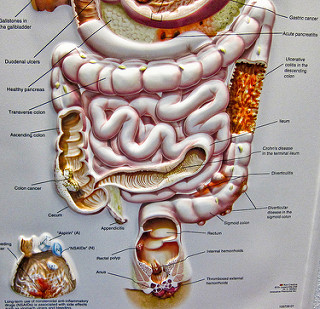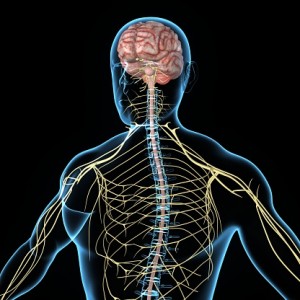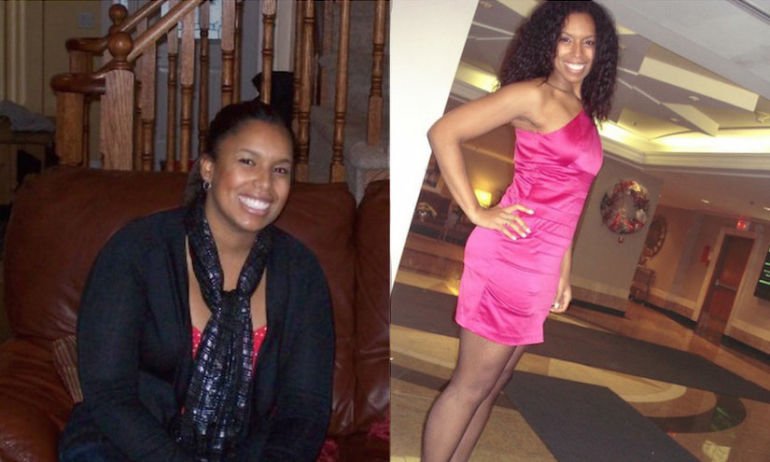Is Spot Reduction of Fat Possible?
Will 1000 Crunches Burn Fat?
Over the years many people have come to MotleyHealth and asked how to lose fat from a specific part of the body. More often than not the problem area is the stomach, but people also ask how to lose fat from the hips, thighs, chest (men) and even face. Unfortunately, it is never possible to spot reduce fat. Let’s take a look why.
Spot Reduction
The fact that there is a name for the process of removing fat from a specific area certainly helps to confuse matters. Why is there a name for a process that does not exist? Honestly, we do not know – our research failed to find the origins of this term.
The argument for spot reduction is simple – that by exercising a particular part of your body you can lose fat and tone up that region. The most common misconception is that by doing sit-ups, crunches or using abdominal exercise equipment, you can burn off your belly fat to get a flat and toned stomach. However, this is not how it works. When we exercise there are essentially two separate actions taking place during and after exercise:
1. Muscle Development
Whenever a muscle is moved under sufficient resistance the tissues are partly damaged. The response is to regenerate new muscle tissue and repair broken linkages to develop stronger muscles – the muscles adapt to the work required of them.
Good nutrition and rest are needed for optimum development, however, even without good nutrition or rest some muscle development is possible. When the muscles grow, a condition called hypertrophy, they become more prominent. This is often referred to as “toning” in many fitness groups – especially when people are describing fitness exercises for women. However, regardless of whether a man or a woman exercises, the same processes are taking place.
2. Fat Reduction
The other process that occurs is fat reduction. This is when the fat cells are broken down by the body to provide a new energy source. Why does this happen? We need to know what fat is first.
Fat cells are a combination of fats and sugars that have been converted during digestion and further chemical processes. The fat cells that we are trying to reduce are also known as triglycerides.
- Triglyceride – These are a combination of 3 fatty acids and 1 glycerol molecule. Glycerol is essentially sugar in a different form. Glycerol can be converted into glucose, which can then in turn be converted into glycogen. Glycogen is the sugar fuel source for muscular contraction.
So, fat cells store glycerols and fatty acids, excess fuel from our diets. We break them down when we need energy.
After prolonged exercise, whether running, swimming, weight lifting or dancing, the glycogen levels in the muscles fall. The result is that the body takes up any sugar present in the blood (glucose) and converts this to glycogen (processed by the liver).
However, as soon as the blood glucose levels fall, the body breaks down available stores. This is not just fat cells though, but also from muscle tissues – and this is why athletes drink sugar based sports recovery drinks – to prevent muscle wastage after exercise.
Of course, as the breakdown of fat is triggered by the body after sensing a reduction of sugar in the blood (the hormone glucagon is released from the pancreas to trigger this reaction) the specific muscles being exercised cannot affect the immediate fat cells. So, spot reduction just does not happen. We talk moire about this on our page What Is Fat?
New Study Show Possible Spot Reduction?
However, saying that, sports scientists did find some evidence of spot reduction / spot lipolysis a few years ago. After studying the effect of performing isolated knee extensions some subjects appeared to show increase fat loss in the areas immediately next to the muscles in the knee (Stallknecht et al, 2006).
However, this was only on a small scale, and knees tend not to be fatty so the body may purposefully reduce fat in this area sooner under normal circumstances.
Their conclusions were:
“In conclusion, an acute bout of exercise can induce spot lipolysis and increased blood flow in adipose tissue adjacent to contracting skeletal muscle.”
But also:
“More calories are expended during aerobic, whole body exercise than by exercise with local muscle groups, and, accordingly, a person seeking to lose fat must be advised to perform whole body exercise.”
Also, the study examined the effects on “healthy, moderately active, overnight-fasted males” – being fasted would mean that their blood glucose levels would already be lower and therefore fat reduction more likely following exercise. What the study did not examine, or report, was fat reduction in other parts of the body that were not exercised.
Some sports and fitness writers declared that this research showed that spot reduction works, but really it was far from being conclusive. One suggested conclusion was that high-rep, high-weight exercises are best for spot reduction – but high rep and high weight just do not go together!
So, hopefully this will clear up the myth of spot reduction for once and for all. When we exercise, if there is insufficient sugar in the blood and no newly digested sugar forthcoming, the body will send out hormones which will start to breakdown tissues from all over the body. Genetics determines where that is – some people will lose fat from the stomach, face, hips, arms etc. quicker than others. For some, the belly may be the last place that fat is broken down.
Now, the question of whether or not we can train our bodies to breakdown fat from other areas first is another matter. Some people believe that metabolic conditioning may help. However, again, there is no scientific evidence, just some isolated reports. Stick to the science and weight loss is easier.
References
“Are blood flow and lipolysis in subcutaneous adipose tissue influenced by contractions in adjacent muscles in humans?” by Bente Stallknecht, Flemming Dela, and Jørn Wulff Helge. American Journal of Physiology, September 19, 2006. Full text available in pdf format: http://ajpendo.physiology.org/content/292/2/E394.full
-
Watch what you drink when dieting
When youre dieting, pay attention to what you drink, too. For
-
Vitamins And Healthy Weight Loss Supplements
Losing weight through diet and exercise is a challenge. Its too easy
-
MACROBIOTICS: TIPS AND ADVICE ON STARTING A MACROBIOTIC DIET
Macrobiotics has been around for so long and celebrities like, Mado
-
4 Healthy Weight Loss Snacks That Aren’t Fruits or Vegetables
Snacking can either work
-
The Simple Way to Lose Weight (In the Shower)!
It seems there is a litt
-
Shed your Pounds Naturally with My Weight LossTips
Just about everybody struggles with his or her weight at least a coupl
- DON'T MISS
- Ultrasonic Liposuction
- Healthy Weight and Height
- Does The Fat Burn The Muscle Program Help You Lose Weight Easily?
- Drop Weight Fast With These Proven Guidelines
- Know Your Food Triggers!
- Laughter Is The Best Medicine For Anxiety, Too
- 5 Habits That Are Hurting Your Health and How To Break Them
- Weight Loss Program Houston
- Major fat-burning discovery
- Weight Watchers Soup




